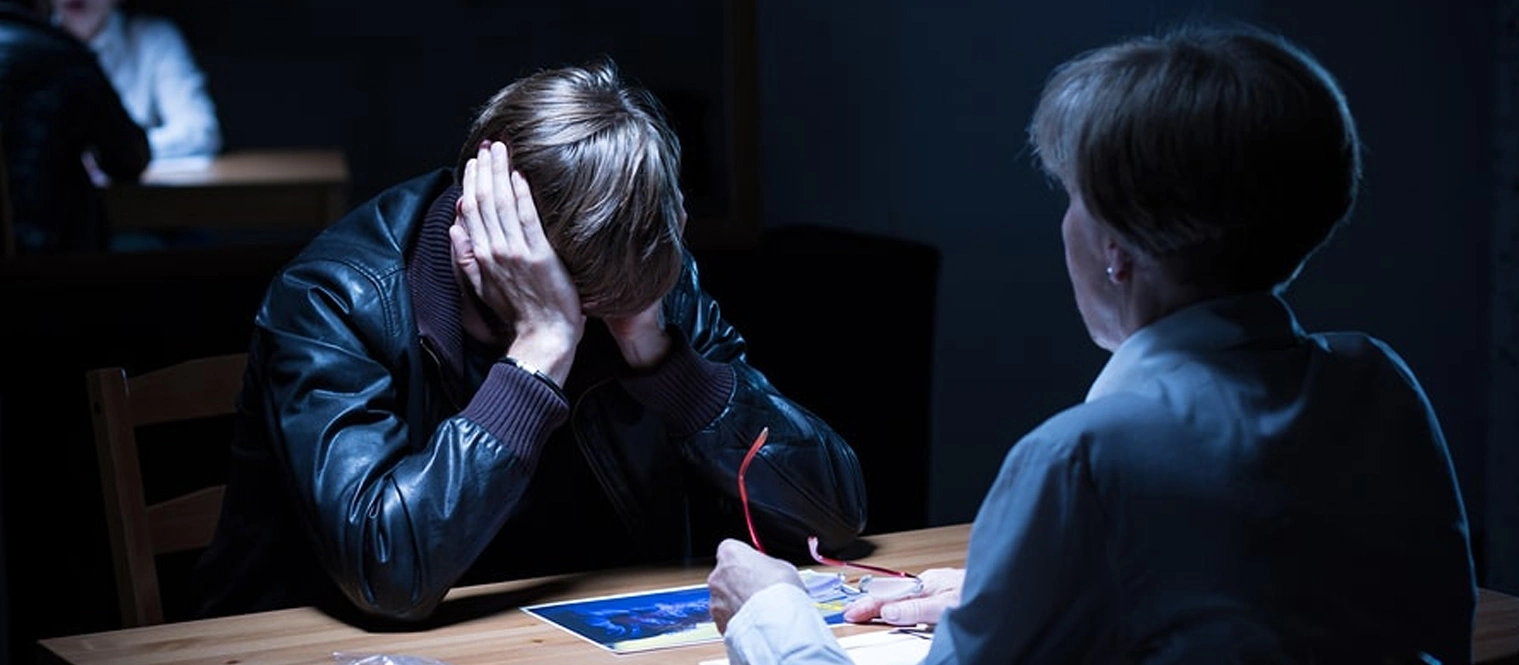
Abstract
Juvenile delinquency is one of the most burning issues and a great challenge in Bangladesh. The research is descriptive in nature. Specifically, only one factor is not to blame for juvenile crimes; rather, a combination of various factors is responsible for increasing the crime rate in urban areas dramatically. Lack of adequate family control, family conflict, peer circumstances, and the effect of movies and social networking platforms, etc are all equally responsible for juvenile criminality. A lot of children in urban areas are unable to meet their fundamental necessities or get adequate recreation from their families, friends and educational institutions. As a result, individuals engage in a variety of anti-social acts to fulfill their basic desires. The purpose of this study is to find out the causes, consequences, and variety of criminal behaviors committed by juvenile delinquents. This article aims to show how juvenile delinquency normally belongs to urban areas in Bangladesh and what major causes impact negatively on their lives and push them to engage in juvenile crimes. The article also focuses on the constitution of Bangladesh and international mechanisms in the eye of human rights regarding this burning issue in urban areas and provides some probable recommendations to root out juvenile delinquency from society. This paper is conducted by using primary and secondary data and the authors of this paper have collected all the data from different secondary sources such books, journals, case laws, case books, newspapers, websites, government regulations, and laws.
Keywords: Juvenile delinquency, crimes, causes, consequences, laws, Bangladesh
1. Aims & Objectives: The two basic aims of this research are to determine what causes juvenile delinquency in urban areas rising, how it affects the persons, society in terms of human rights, and how to stop it.
1.1 Research Objectives:
1. To examine the situation of juvenile delinquency in urban areas of Bangladesh.
2. To examine the present laws and legal system in relation to juvenile delinquency.
3. To examine the causes and effects of juvenile delinquency in light of international regulations.
4. To provide a likely solution
1.2 Research Questions:
1. Why is the juvenile crime rate increasing in urban areas?
2. In what way juvenile delinquency can root out from society?
1.3 Research Methodology:
The majority of this study was accomplished through primary and secondary sources. Secondary data has been collected by newspaper articles, news features, and official reports published in local, national and international daily newspapers. Several national non-governmental organizations, including Ain-o-Salish Kendra (Ask), Manusher Jonno Foundation (MJF), and Bangladesh Legal Aid and Services Trust (BLAST), have gathered secondary data. This study takes a qualitative and quantitative approach, including data gathered from secondary sources. The observations of the authors of this work are frequently used while investigating the nature and origins of the issues. Authors of this paper will include some possible solutions for determining the difficulties. About seventy different people from diverse professions contributed their ideas and opinions to this investigation. They provided answers to a number of pertinent questions, all of which have a direct bearing on this study. For instance, it is unclear if drugs, poverty, social media, the influence of the wrong peer, or a broken family are the primary causes of juvenile crime in Bangladesh's urban areas. For research objective 1, the researchers acquired secondary sources, whereas for research objective 3, the authors gathered material from primary sources. To address research, aim 2, the authors attempted to locate numerous sections, articles, regulations, Acts, and case laws in Bangladesh.
1.4 Literature Review:
Nahid Ferdousi explores the current trends and significant socio-economic causes of juvenile delinquency in Bangladesh in her paper3 , but the authors of this paper focus on identifying the causes and effects of juvenile delinquency in accordance with Bangladeshi laws and international mechanisms. This paper focuses on both social and legal issues, but Nahid Ferdousi also examines current social and economic developments. Md. Asaduzzaman attempted to address the real-world situation of juvenile delinquency that is occurring in many locations around Bangladesh4 . The author also made an effort to address the main issues related to juvenile delinquency. However, the writers of this research put a strong emphasis on analyzing the causes and consequences of juvenile delinquency in light of international and Bangladeshi legal frameworks and socio-legal considerations.
Urban environments may be defined by the following:
1) the global population is ageing, and so is the population of urban areas,
2) megacities and metropolises have become the driving force of the economy,
3) demographic inequality is growing (the gap between the wealthiest and the poorest is the largest in the last 30 years),
4) migrations are essential to urban areas (in addition to migrations from rural areas, illegal migrations also stand out), and
5) urban dwellers are characterized by feelings of insecurity and perceptions of growing risks – violence and fear of crime are the most common daily concerns, while new risks, like terrorism, tighter social control, and diseases, have emerged (United Nations Human Settlements Programme, 2016). Pirnat and Meško (2020) also note that urban areas face problems of housing issues, un employment, and cultural frictions.
2. Introduction:
The early years of children present a vital window of opportunity to mold a child's overall development trajectory and lay the groundwork for their future. Children require health care and nourishment, safety and security from harm, early learning opportunities, and responsive caregiving—such as playing, talking, and singing with loving parents and caregivers—in order to reach their full potential, which is a fundamental human right. All of this is required to fuel expanding bodies and nourish developing brains5 . A country's future lies with its children. Children will eventually govern, lead, and establish policies for both their nation and society. It is quite concerning that kids are currently getting involved in illegal activity. Many of them engage in illegal activity, which destabilizes society and makes the nation sick. Crime is defined as any socially destructive act or omission that violates a state's norms and peace. According to Sutherland, crime is a symptom of social disorganization. At present time a majority of children are involved in different types of crimes which are considered juvenile crimes but these are the children who will lead the nation in the future.
According to the Oxford Dictionary of Law a crime is an act (or sometimes a failure to act) that is deemed by statute or by common law to be a public wrong and is therefore punishable by the state in criminal proceedings6 . According to the statistics of UNICEF, there are more than 36 million teenagers in Bangladesh7 . The police headquarters has kept the juvenile crimes-related data for tracking youth criminality since 2012. According to sources in the Social Welfare Directorate, the majority of these teenagers were arrested and transported to rehabilitation centers on the charge of drug, murder, and rape.
According to the Bangladesh Bureau of Statistics, approximately 40 million children who are between the ages of 5 and 17 in Bangladesh, among them about 1.3 million are engaged in the most dangerous employment and 70% engage in illegal activities as a result of poverty. Poverty has been identified as a key factor affecting delinquency by social science studies throughout the last century. Among the children, around 75 per cent are involved in various types of crimes such as drug addiction, drug paddling, stealing, robbing, crying firearms, rape, murder and so on. Concerned people are worried of it that day by day the number of juvenile delinquents activates are increasing.
Some of them rebelled against the injustices done to them by leading dangerous lives and starting a new subculture. Juvenile delinquency cannot be assessed in a way that separates it from societal circumstances. Juvenile subcultures and increased juvenile criminality are signs of social dysfunction, which implies that the children have not received enough nourishment. When the prevailing culture in a nation isn't able to give all of its kids enough opportunity, the poor kids will revolt and start their own subculture. Priority must be given to comprehensive child development programs in order to lead the nation to prosperity. Though it is enshrined in Bangladesh's constitution under Article 28(4), the state can create particular provisions for children's development.
In order to promote child development, the Children Act was passed in 1974, and the Bangladesh Children Academy was founded in 1976. Bangladesh was one of the first countries to ratify the United Nations Convention on the Rights of the Child and has already begun to implement its provisions. A juvenile is a person who has not reached the age of majority and is thus considered to have a special status, which is a common occurrence. Juveniles will be subjected to a different level of behavior than adults.
Definition of a juvenile:
The word 'juvenile' has derived from the Latin word 'juveniles' which means young. In other words, 'juvenile' connotes a young person without fully developed traits of youth.
3.1 Who is a juvenile offender?
According to the Bangladesh Penal Code 1860's section 82, no act of a child under the age of 9 can be considered a crime. In the Majority Act, of 1875, anyone under the age of 18 is called a juvenile. By interpreting sections 82-83 of the Penal Code and Children Act, juvenile offenders will be 12 to 16 years old.
No child shall receive a sentence of execution, life in prison, or imprisonment, according to Section 33(1) of the Act. The children's court may mandate that a kid be held in a child development center for a minimum of three years and a maximum of ten years if the youngster is found guilty of a crime that carries a death sentence or life in prison. Additionally, Section 34 stipulates that children may be held in a child development center for a maximum of three years if found guilty of a crime that does not carry a life sentence or the death penalty. According to Section 497 of the Code of Criminal Procedure, 1898, a defendant who is younger than 16 years old may be freed from custody on bail.
4. Types of juvenile delinquency:
Three categories can be used to categorize juvenile delinquency, also known as offending: delinquency,
Two distinct categories of offenders arise throughout adolescence, according to Moffitt's developmental studies (Moffitt, 2018:78). The first is the life-course persistent offender, also known as the repeat offender, who starts offending or displaying antisocial or aggressive behavior in adolescence (or even childhood) and doesn't stop until adulthood; the other is the age-specific offender, also known as the adolescence-limited offender, whose juvenile delinquency or offenses end during their adolescent years.
5. Major causes of juvenile delinquency in Urban areas:
Juvenile delinquency is a global issue these days. Despite the implementation of special processes and intensive rehabilitative efforts to address the issue, there has been a discernible rise in the prevalence of juvenile delinquency. Kids are growing up to be more disrespectful of authority figures, violent, and arrogant. The main causes of this striking increase in teenage delinquency are as follows:
Poverty:
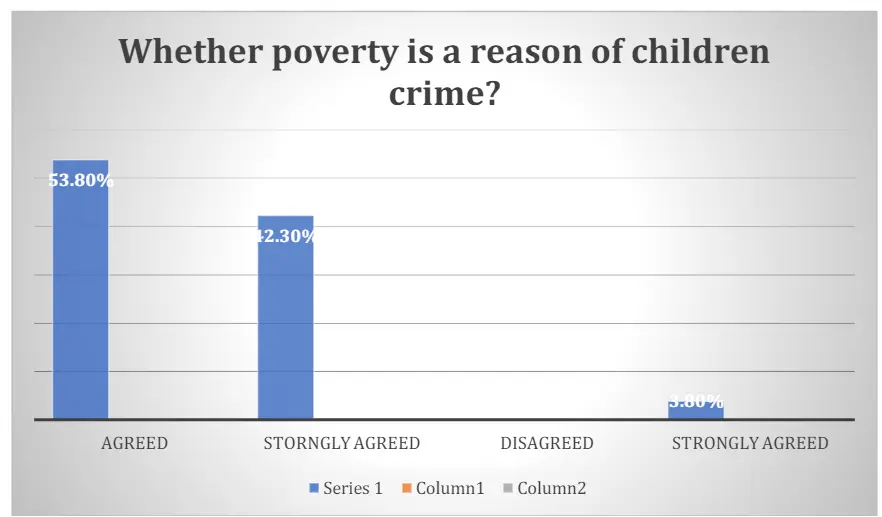
Figure: 1: Whether poversty is a reason of children crime?
Our research indicates that one of the primary causes of juvenile delinquency is poverty. 53.80 percent of experts thought that the main cause of the rise in juvenile criminality in Bangladesh's cities is poverty. Our research indicates that there is frequently a complicated link between financial crisis and adolescent criminality. Families may experience financial instability during recessions, which can result in more stress and less resources. As a result, there may be an increase in juvenile delinquency rates as young people look for other ways to deal with life or support their family.
Family:
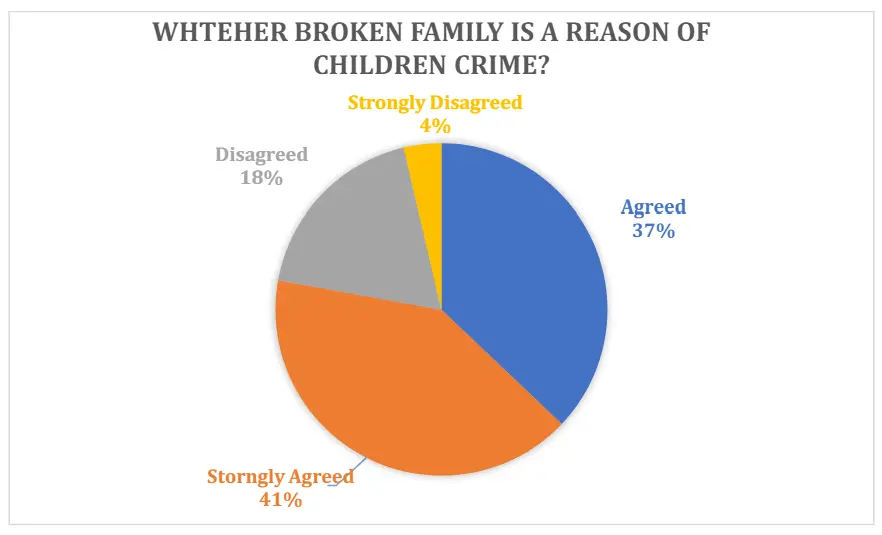
Figure: 2 Whether broken family is a reason of children crime
We may point to Oyshee Rahman v. State14, where the defendant killed both of her parents at random and had no clear reason for doing so. Her parents' busy schedules prevented them from spending enough time with her throughout her formative adolescent years. It might not have happened if she had been able to obtain parental efficacy. Thus, we should be concerned about parental support in order to help children who are at danger of becoming delinquent. Numerous data suggest that children with neurological illnesses or personality disorders may fare better if they have supportive and good parents.
Our study clearly demonstrates that 41% of Bangladeshi people of all professions strongly believed that a broken family contributes to a rise in juvenile criminality. However, 37 percent experts strongly agreed that broken family harm childrens’ behaviour and push them to commit crime.
Wrong peer selection
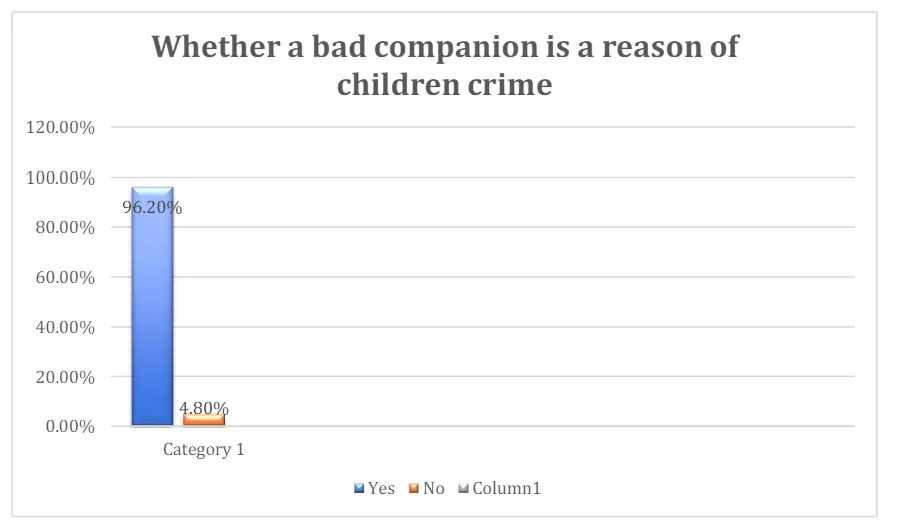
Figure: 3 Whether a bad companion is a reason of children crime
After their families, people spend more time with their peers. The majority of pupils spend their time at their educational institutions and participate in various outdoor activities. As a result, individuals have a tremendous incentive to make the wrong judgment by choosing the wrong peers. Some are inspired by their friends to commit crimes throughout their adolescence, such as stealing, robbery, drug dealing, rape, and school bunking. Though they are unable to choose the best method to live their lives due to age concerns, they rely on their peers to some extent. They are sometimes deceived by their peers, and as a result, they develop undesirable habits and lead a disorderly life, which undermines their morals and social conduct.
Meanwhile, another survey indicates that 56.1% of drug users in the capital are either unemployed or students, according to the International Centre for Diarrheal Disease Research, Bangladesh (ICDDRB) Journal of Health, Population, and Nutrition (JHPN). In 85.7 percent of cases, drug use begins while a person is around friends. The people involved in the Rifat Sharif murder case were found by the authorities to have developed a "gang culture" known as "Bond 007" due to their antisocial friends, in addition to operating a drugs operation.
Juvenile criminality is also significantly predicted by peer rejection during childhood. While there are a variety of reasons why children could be shunned by their classmates, violent or aggressive behavior is frequently the cause of rejection. The child's capacity to socialize appropriately is impacted by this rejection, which might lessen their tendency toward aggression and frequently causes them to gravitate toward antisocial peer groups. According to our research it is shown that 96.2 percent people believe that wrong peer is responsible for children crime in Bangladesh.
Action movie/ pornography:
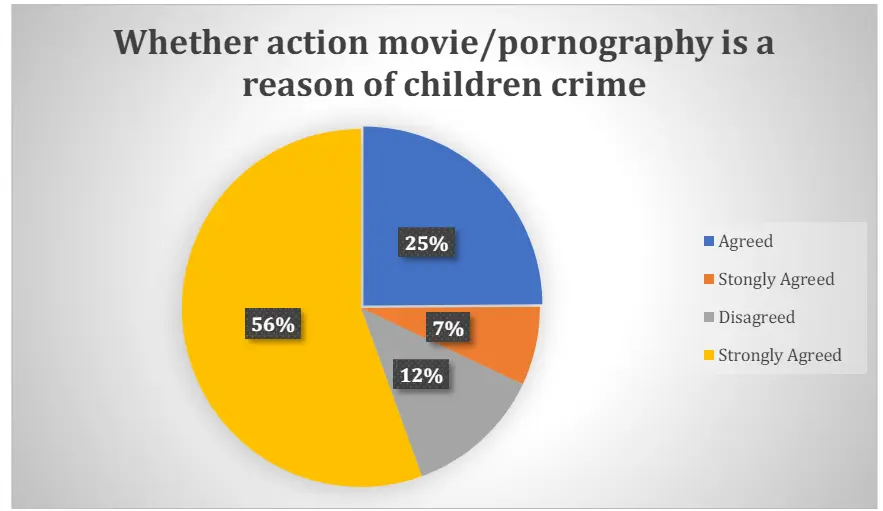
Figure: 4 Whether action movie/pornography is a reason of children crime
Our results show that 56% of respondents strongly agreed that pornography and movies are major factors contributing to the rise in adolescent criminality, and 25% agreed with the following explanation. But 12% of respondents disagree, believing that pornography and movies are important contributors to juvenile criminality.
>Social Media:
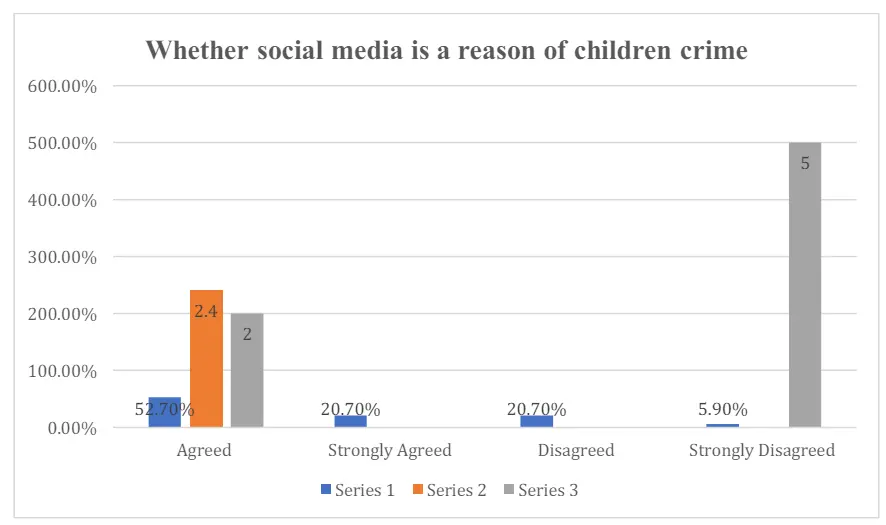
Figure: 5 Whether social media is a reason of children crime
One worrisome issue that contributes to juvenile misbehavior is social media overuse. Social media's widespread use has made it simpler for young people to partake in risky activities including cyberbullying, online harassment, and illicit activity. Social media's anonymity and accessibility might give young people the confidence to do things they otherwise might not. Our research shows that 20.70 percent of respondents strongly agreed with the following argument, and 52.70 percent of respondents believed that social media is a major contributing factor to the rise in juvenile criminality. 5.90 percent, however, do not believe that social media is not a significant contributing element to youth criminality.
5.1 Other factors of children crime in urban areas of Bangladesh:
Improper environment
Juvenile delinquency refers to the participation of minors, typically individuals under the age of 18, in illegal or antisocial activities. The term "improper environment" is often used to describe a situation in which a young person is exposed to negative influences or adverse circumstances that contribute to their involvement in delinquent behavior.
The improper environment can encompass various factors that may increase the likelihood of juveniles engaging in criminal activities, such as:
1. Family factors: Dysfunctional family dynamics, lack of parental supervision, parental substance abuse, domestic violence, and neglect can significantly impact a child's development and behavior.
2. Community factors: Living in high-crime neighborhoods with limited access to resources, quality education, and recreational activities can expose juveniles to higher risks of delinquency.
3. Socioeconomic factors: Poverty, unemployment, and lack of opportunities can contribute to feelings of hopelessness and desperation, pushing some juveniles towards criminal behavior
Easy access to drugs
Easy access to drugs is a concerning factor in the rise of juvenile delinquency. Adolescents facing personal struggles or lack of guidance may turn to substance abuse as a way to cope or fit in. The consequences can be severe, with drug-related offenses contributing significantly to the juvenile justice system.
6. Present scenario of juvenile delinquency in urban areas
Bangladesh is gradually becoming one of the developing South Asian nations as a result of its increased industrialization. However, it encounters several issues throughout this transition, juvenile delinquency being one of them. The rising incidence of adolescent delinquency is a major problem in contemporary countries. The explanation behind this is that not every child has the good fortune to have a childhood free from stress and hardship. Some of these kids commit crimes due to horrible conditions, for which they are punished by the nation’s laws. The crime incidents have rose than before. They way juveniles proudly circulate videos/photos on social media after committing crimes, it conveys to their recklessness which is a matter of concerns because ultimately, they are the future of a society.
Dhaka residence witnesses gang culture for a long time which are a little in number in comparison with the past. Back in five-six years that number was small. Earlier, gang members activities were befitting as there was no social media but they used to communicate with each other via phones or in person. Recently the gang culture is familiar for Bangladesh they mainly use hockey sticks, machetes and knives. Some gang members are extremely a great threat for the society. A brutal murder of 14-year-old teenager named Adnan Kabir by some gang members in Uttara in early January raised the questions whether this culture is a serious concern for us? ‘D Company’ a gang team in Dhaka which are consisted with at least fifty people lead by a teenage call Bappi used to provide each member Tk 300–400 every week. Bappi used to make between Tk2 and Tk3 lakh a month from a variety of illegal operations.
Operations are in progress to apprehend the other gang members who have provided information about themselves to the detained members.
With a total of 339 members, at least 80 recognized juvenile gangs have been wreaking havoc around Dhaka. A number of factors, including tensions between seniors and juniors, false claims of bravery, technology abuse, a weakening of family bonds, and poor socialization, are leading to an increase in child crimes.
Dhaka Metropolitan Police sources state that between 2010 and 2021, there were 46 instances pertaining to juvenile crimes in the capital, one of which is presently in the last stages of trial.
Impacts of juvenile delinquency
Impact on the victims: Victims suffer the most visible effects of juvenile delinquency. No matter what type of crime is it but the victim suffers a loss. In addition, victims may have to bear expenses of the necessary medical care, psychological treatments along with the costs of replacement of the damaged or destroyed items or property
Impact on the juvenile: The juvenile who commits the crime faces consequences as well. The juvenile may lose his/her liberty at an early age besides educational opportunities. Moreover, the crime records also affect the future of a juvenile specially on career.
Impact on the families: The family members of juvenile in urban areas face immense trouble as their children commits crime. Most of the people in urban areas lead their life in urban areas with maintaining a social status, whereas they have their own community. However, families witness some social risk factors due to the violent crimes caused by their children.
Impact on the society: Juvenile delinquency is linked to many serious offence such as, drug use, gang activity, theft etc. All of these issues are very challenging for a society and tackling these challenges are more competing. These juveniles pose a threat to the future for everyone in a society. Young people are the future and hope of a society/nation but losing themselves in a dark world is a source of worry for a society.
7. Laws and regulations of juvenile delinquency:
The Constitution
Bangladesh's Constitution is the ultimate law. The rights of children are protected under Bangladesh's Constitution, Article 28(4). In order to give children extra protection and care, the state may enact specific laws. In general, children are given additional protection under Articles 31, 32, and 35(3), much like any other regular citizen.
The Penal Code 1860
Under Sections 82 and 83, the juvenile is released from criminal culpability. Give an exemption under section 82 until the age of nine, and under section 83 from the age of nine to twelve if the person lacks the ability to comprehend the repercussions of committing any crime.
The Bengal Jail Code 1894
Children and adults were given separate trials under the Bengal Jail Code of 1894. Additionally, a different prison resident. The Reformative School Act of 1897 provided us with standards for the reformation of children.
The Code of Criminal Procedure 1898
The colonial regulations that gave rise to Bangladesh's rudimentary juvenile justice system were found in Section 29B of the Code of Criminal Procedure, which allowed minors to be tried in juvenile courts.
The Vagrancy Act of 1943
The Vagrancy Act of 1943 defines a vagrant as someone who lives off the wages of others through almsgiving, does not work, is seen in public begging for alms, or wanders rather than works in their place of abode24. The Act seems to arbitrarily arrest youngsters, and the police have turned it into "a tool to keep urban areas free of undesirable elements and to extract financial considerations" by threatening to use it to take bribes from minors.
The Children Act 1974 (Children Rules 1976)
Despite being regarded as the foundational laws for safeguarding children, the Children Act of 1974 and the Children Rules of 1976 were not entirely compliant with the 1989 Convention on the Rights of the Child (CRC) and other international norms. As a result, the government created the Children Act, 2013 based on the CRC. Following Bangladesh's independence, the government took the commendable step of establishing a juvenile justice system. Due to a number of government shortcomings, that particular law was ineffective, which meant that the general public's desires continued to be indulged. However, that very statute established a distinct court for adolescents, which served as the foundation for the children's justice system. Later in 2013, the legislature abolished the previous legislation and created the Children Act 2013 in order to meet the wishes of the people.
8. Administration of juvenile justice in international perspective:
Standard Minimum Rules for the Administration of Juvenile Justice 1985
According to Article 8 the juvenile's right to privacy must be upheld at all times to prevent injury from being done to her or him by excessive publicity or the labeling process. Different cultures and historical periods have different minimum wages for criminal culpability. The contemporary method would be to think about whether a kid may fulfill the moral and psychological requirements of criminal responsibility; that is, if a child can be held accountable for fundamentally antisocial behavior due to his or her unique capacity for judgment and understanding. According to Article 5. 1 of the rules it’s stated that the juvenile justice system must prioritize the welfare of the young offender and make sure that any response is always appropriate given the circumstances surrounding the offense and the offender. A few key factors that are globally acknowledged in the human rights treaties now in existence and that are necessary components of a fair and just trial is emphasized in Rule 7.1. For example, the International Covenant on Civil and Political Rights' article 14 paragraph 2 and the Universal Declaration of Human Rights' article 11 both include the presumption of innocent.
The Convention on the Rights of the Child (CRC), 1989
According to Articles 37 and 40 of the Convention on the Rights of the Child (CRC) 1989 the rights of children who are in legal trouble, providing them with fundamental protections as well as legal and other support for their defense. No child shall be the victim of an arbitrary arrest, imprisonment, torture, or other cruel, inhuman, or degrading treatment, including the death penalty or a life sentence, according to Article 37 of the CRC. When a kid is arrested or placed in jail, it must follow legal procedures and the child must be treated with respect and humanity. According to Article 40 of the CRC, a child's human rights, basic freedoms, feeling of worth, and dignity must all be respected when they are suspected, accused, or found to have infringed the law. 31A child must be informed of charges promptly, be given the benefit of the doubt, not be forced to testify against themselves or admit guilt, and have unrestricted access to legal counsel. Additionally, the age of the child and the need to facilitate their reintegration into society must be taken into consideration.
UN Guidelines for the Protection of Juveniles Deprived of their Liberty 1990
UN Guidelines for the Protection of Juveniles Deprived of their Liberty 1990 in line with fundamental freedoms and human rights, the Rules aim to set minimum standards that the UN has approved for the protection of minors deprived of their liberty in all circumstances. They also aim to promote integration into society and mitigate the negative impacts of all forms of detention. (Article 2). According to Article 4 of the rules no juvenile will be discriminated based on race, color, sex, age, language, religion, country, political viewpoint, cultural practices or beliefs, property, birth or family status, ethnic or social origin, handicap, or any other factor. More importantly, the Rules should be implemented unbiasedly and without prejudice of any type.
According to Article 21 of the rules, the juvenile's religious and cultural convictions, customs, and moral principles ought to be honored. Without a legitimate commitment order from a court, administrative agency, or other public authority, no adolescent should be admitted to a detention institution. This order's information has to be promptly put into the register. In any facility where there isn't a registry of this kind, no juvenile should be held.
The Riyadh Guidelines) 1990
The Riyadh Guidelines provide a framework for member states to effectively prevent and treat juvenile delinquency, focusing on rights-based methods. Implementing these guidelines can enhance safety and inclusivity for juveniles in the member states of the UN. Countries can work to make their society safer and more inclusive for juveniles by implementing the guidelines and guiding principles which are,
Prevention: The guidelines emphasize prevention as the primary strategy for addressing juvenile delinquency, recommending member states to implement comprehensive preventive programs addressing risk factors like marginalization, deprivation, and insufficient education.
Special Attention to Vulnerable Groups: The guidelines highlight the importance of prioritizing vulnerable populations like girls, street children, and disabled individuals, urging member states to develop tailored interventions.
Cooperation and Coordination: Guidelines emphasize international coordination and cooperation between member nations, UN agencies, and civil society organizations for exchanging information, best practices, and technical support in enhancing juvenile delinquency response and prevention.
Data Collection and Research: All the member states are encouraged to enhance their data collection systems for accurate juvenile delinquency data, which can be used to monitor crime prevention and guide evidence-based policies.
Findings & Recommendations:
Juvenile delinquency in Bangladesh is a pressing concern that requires immediate attention. The rising trend of young individuals engaging in criminal activities is alarming. According to this research it’s clear that some factors are responsible for increasing the juvenile crime rate in urban areas of Bangladesh. Juvenile crime is great thereat for the society which impacts badly on the individuals including juvenile family. According to our research it is highly noted that three specialized facilities called Child Development Centers (CDC) have been established in Bangladesh to house juvenile offenders. Under the Ministry of Social Welfare, these are overseen by the Department of Social Service. This number is not enough for treat juvenile adequality.
To tackle this issue, a multidimensional approach is crucial. Strengthening the education system, providing accessible and quality education, and incorporating moral and ethical values can prevent juveniles from getting involved in crime. Establishing community-based support systems, such as counseling centers and rehabilitation programs, can assist in reintegrating delinquents into society. Additionally, collaboration between law enforcement agencies and social welfare organizations is essential for holistic prevention and intervention. By addressing the underlying causes andproviding support to at-risk youth, we can work towards reducing juvenile delinquency and creating a safer future for Bangladesh.
Addressing juvenile delinquency related to improper environments requires a multi-faceted approach, involving families, communities, schools, and law enforcement agencies.
To address this problem, it's crucial to invest in preventative efforts such as improved social services, mentorship programs, and educational support. By empowering vulnerable youth, we can break the cycle and mitigate the impact of financial crises on juvenile delinquency.
To address juvenile delinquency for easy access to drugs issue, a multi-faceted approach is needed. Enhancing awareness campaigns about the risks of drug abuse, promoting drug prevention programs in schools, and increasing access to counseling and treatment services can help steer vulnerable youth away from the destructive path of substance abuse. By providing support and guidance, we can better protect our youth and prevent them from falling into the trap of juvenile delinquency fueled by drug addiction.
Youths must learn to reintegrate into "free" life after being released from juvenile incarceration. Many people find that their pattern of harmful behavior is broken by youth detention. The young person must establish a way of living apart from crime once they are released from jail. Courts have made an effort to put beneficial social services for ex-offenders and their families into place to aid in this process. Job placement, school follow-up, extended counseling, and extended drug treatment are a few of these. Youth on parole benefit from the Functional Family Therapy (FFT) program by learning more positive and productive communication skills from their families.
The most recent comprehensive children's act needs to be implemented in every area that involves children. By assigning a sufficient number of probation officers to each youngster in question. Moreover, bail need to be regarded as standard procedure, and incarceration or detention ought to be reserved for extreme circumstances.
To combat this issue, it is crucial to promote digital literacy and responsible internet usage among youth. Educating them about the potential consequences of their actions, fostering empathy, and encouraging positive online behavior can help prevent the negative impact of social media on juvenile delinquency. Additionally, implementing stricter regulations and enforcement measures can hold individuals accountable for their actions and deter misuse of these platforms. By creating a safer digital environment, we can reduce the incidence of juvenile delinquency stemming from the misuse of social platforms.
Conclusion:
In light of this, Bangladesh is growing juvenile delinquency is impeding the nation's progress. Given that today's youth will shape the future of our nation, it is imperative that the government give this subject more attention. At that point, advancement will be able to advance one step closer to its peak. Children are the society's greatest resource. The rate of youth criminality is rising daily. The civilization will collapse if we do nothing to curb youthful criminality. Once more, it must be remembered that protecting children's rights is essential to reducing delinquency. Therefore, it is exceedingly challenging to provide the kid the justice they deserve. Bangladesh has not yet put in place a completely distinct legal system for minors who are in legal trouble. The definition of juvenile and juvenile delinquency, the reasons behind juvenile delinquency in urban areas, the various juvenile laws that apply on a national and international level, the difficulties in ensuring juvenile justice, and strategies for reducing juvenile delinquency rates will all be clarified by this research. This study has attempted to comprehend the issue from its foundation, which is why we have begun with the historical background of delinquency and worked our way forward. In actuality, the issue in Bangladesh is becoming worse every day. In order to comprehend the true nature of the issue, one must grasp the definition of delinquency and its relevance within the context of our society's social structure. Conversely, unpleasant surroundings, disregard for basic necessities, unfavorable company, and other abusers and temptations would spoil the child and probably cause him to become a delinquent.